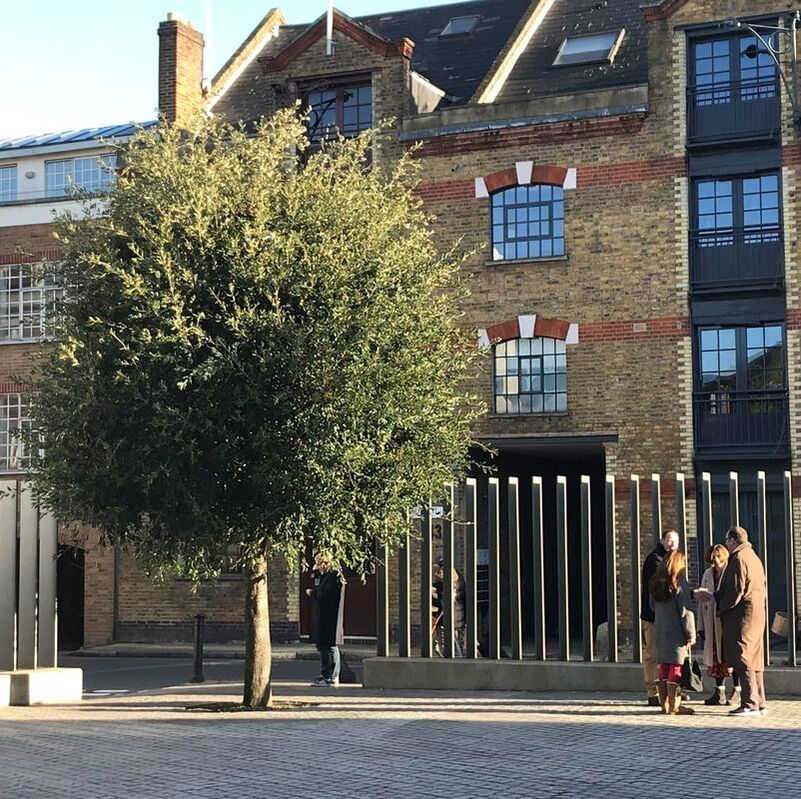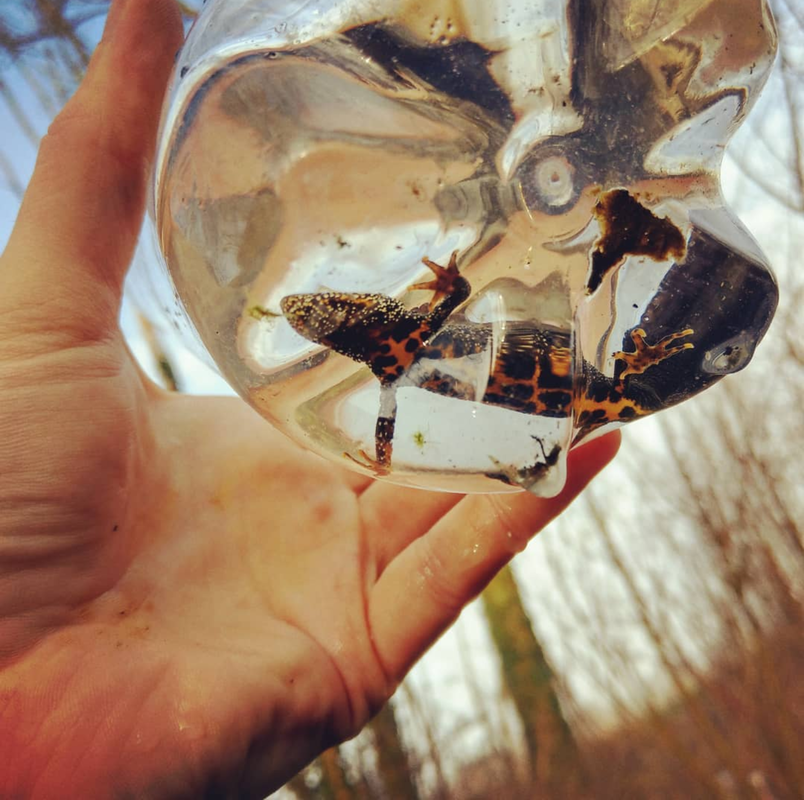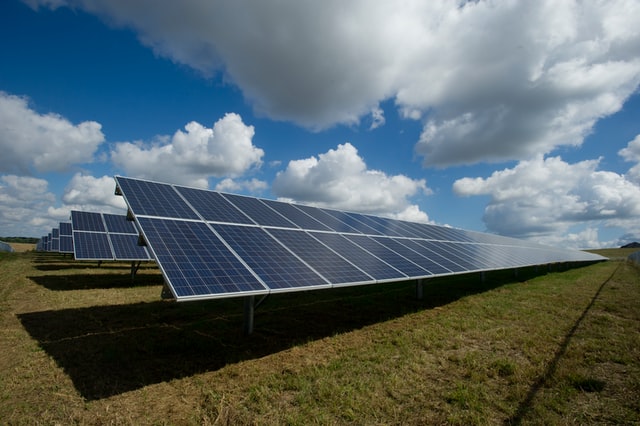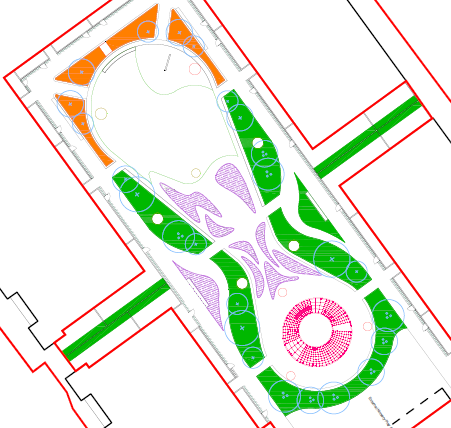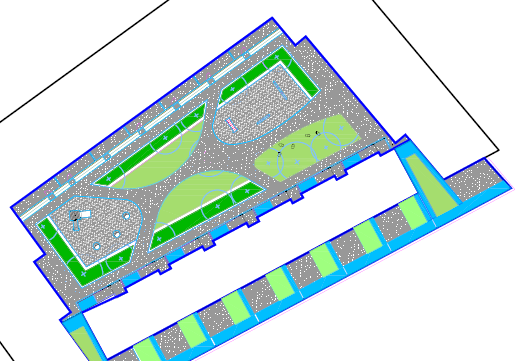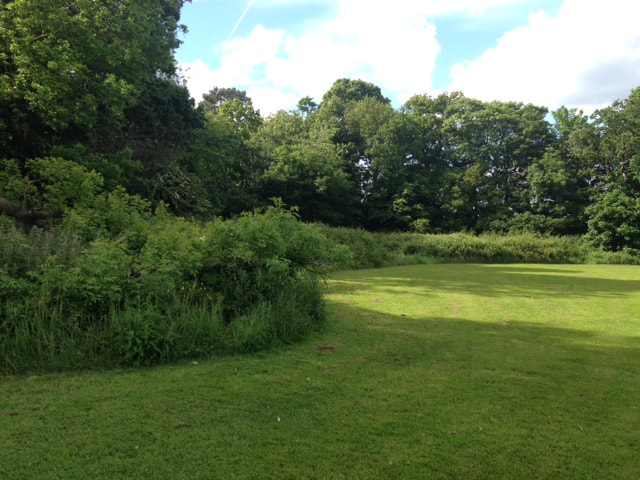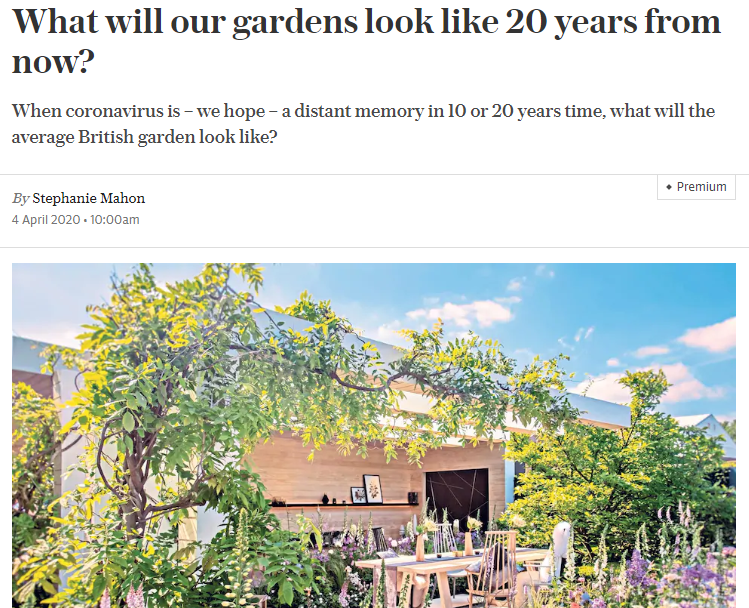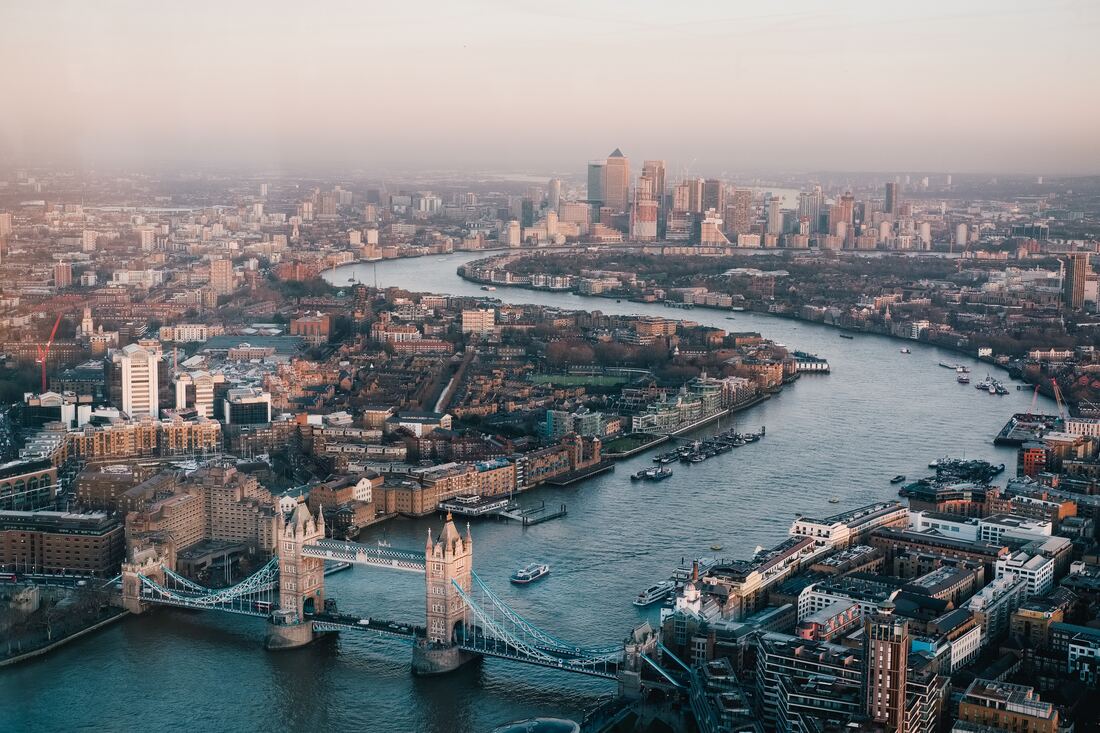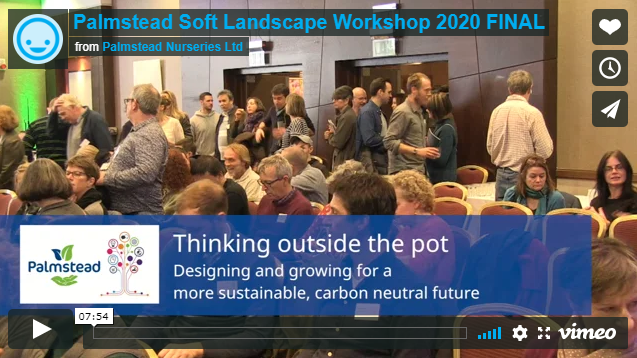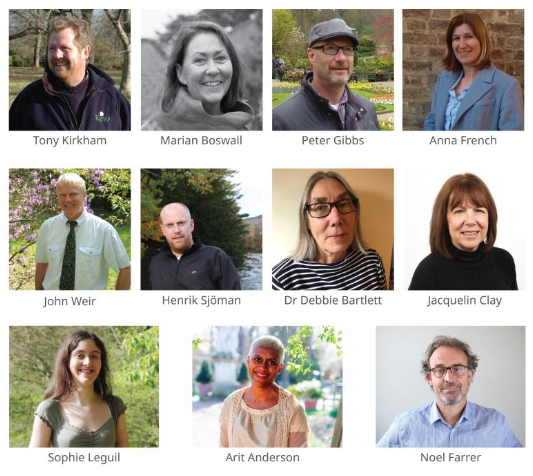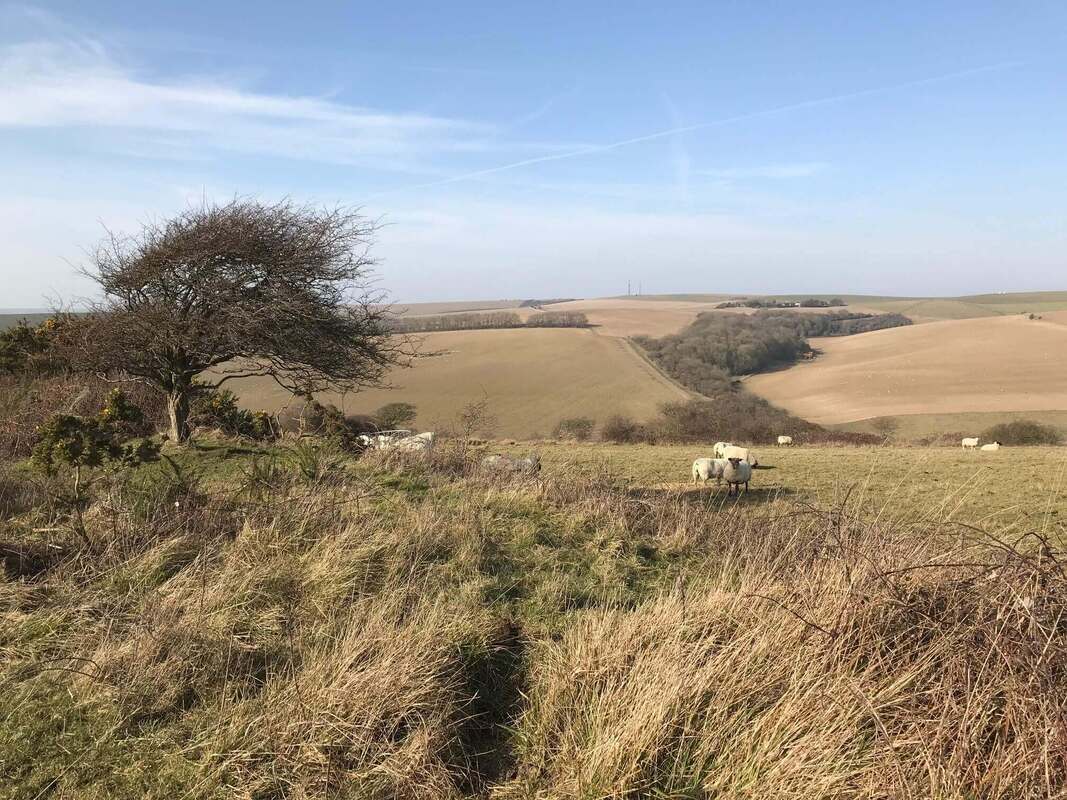What are the Main Differences Between the Urban Greening Factor and the Biodiversity Metric?26/4/2021 The Urban Greening Factor (UGF) is distinct from the Biodiversity Metric in that they provide two completely separate measurements and cannot be mixed. BIAC concentrates on ecological biodiversity while the UGF is more interested in the wider environmental benefits green infrastructure can provide.
It is a new policy initiative within the new London Plan 2021 (Policy G5: Urban Greening, pages. 322-325) and recognises the many positive advantages that green infrastructure can provide to urban locations, such as:
Urban Greening provides a score between 0-1 that measures the green cover across a particular area or site. It is distinct from the BIAC, and includes features such as green walls and roofs which can be counted in its score. It does not take into account the losses or gains in biodiversity or the value of individual habitats, its focus is on the overall ratio of built to natural landscaping. Each type of surface cover is given its own score (with certain features such as trees and semi-natural wetlands scoring a higher individual rating) and these are then used to determine the final score for a site. Unlike the BIAC quantity can make up for quality of green surface cover. Typically, Urban Greening is something that is best addressed at an early stage of the design process through a landscape led planning approach, but it can be increased in later stages of the development through add-ons such as green walls/roofs or similar features. The London Plan recommends a target score of 0.4 for predominantly residential developments, and a target score of 0.3 for commercial developments, although local boroughs can set their own target. The Urban Greening Factor targets set by the local authority need to be met on site regardless of any planned offsite compensation proposed to increase a developments biodiversity Net Gain. BIAC scores post-development usually needs to be equal to or greater (10%+) than the biodiversity Net Gain score prior to commencement while the Urban Greening Factor only needs to meet the target score, and thus can remain equal to or even decrease as a result of a development without issues so long as it remains above the target set out in the local plan. Just like with the BIAC, the Urban Greening Factor is only meant to function as an assessment tool and should not be the sole method of determining urban greening. References: What does the Urban Greening Factor mean for London? | Landscape Institute Urban Greening Factor (adas.uk)
0 Comments
This is the alternative to applying for a mitigation license if a development is likely to affect great crested newts. It has been running in prototype since 2018, with three authorities having adopted the alternative for some years, and now having some results to show.
There are now over 122 local planning authorities signed up to District Licensing. This means a developer can use district licensing instead of mitigation licensing. While the Agencies and local government seem excited about this alternative, the uptake by developers is lagging. The scheme was introduced to provide a simplified approach towards conservation of this protected amphibian. Also, conservationists quite rightly felt that a district-wide approach was superior in terms of maintaining populations in a wider area. A mitigation license only really concerns itself with populations at the site level and can lead to piecemeal measures that do not take into account wider populations and other conservation efforts. There is nothing to object to regarding this approach. However, there needs to be developer 'buy in' to this. The number one problem is that the developer has to agree to a District License before they know how much it will cost. There is a charge levied depending on the quantum of habitat lost from the development. And the District scheme has its own bureaucratic requirements. A developer is likely to stick with mitigation licensing as by now most are familiar with the process and ecologists with capability to undertake mitigation licensing are available. In January, Natural England convened a panel to review the outcomes in the longest running District Licensing Schemes. These are in: Woking, the Nature Space Partnership, Telford & Wrekin Council and Dorset Council. The results are ambiguous: the data sets are small and each of the four schemes uses different data to assess outcomes. The results to date move the knowledge base no further. The main Agency focus is now to collate data and make some use and some sense of it. The ongoing climate crisis is making us all alive to the need to reduce carbon emissions. There are many exciting emerging technologies: some are rather technical, and others a bit more well established and widely used. Solar energy is one of these, after all, what could be more delightful than sunshine?
We are doing a review of an emerging integration of green roofs – solar panels (click here). This will no doubt be challenging beyond the design stage, as green roofs can have maintenance issues. However, digging deeper into green technologies can find troubling trends. Our work in assisting on the land use planning side of solar energy has uncovered some such trends. Renewable energy is attracting a lo t of investment. It is also encouraged by government grants and tax credits – the last always attractive to investors and operators. Emerging and established EU regulations and corporate policies now mandate carbon off-sets. This is good in principle but can create unintended consequences. Another factor is economies of scale. Any energy company or investor is going to look for the best return on investment. A large single development is more profitable than a small one. This applies to renewables as much as to any other kind of energy source or investment in general. Micro-generation needs to be maximised but is running into trouble at the moment (see the government’s current green scheme); at the individual or household level, it is much more difficult to justify the investment, which can be substantial, if the benefit is not forthcoming. For the operator/investor, the decision is different: they expect to invest up front, and as long as the costs are off-set, and the returns clear, they will do so. So how does this effect land use planning? We have worked on a number of solar schemes now and have found that environmental capacity is essential if schemes are not to cause harm. The medium- sized schemes can be designed and sited in such a way as to avoid environmental harm. The typical issues are: effects on intrinsic landscape quality, effects on visual amenity – views – and effects on biodiversity. But the need to define the capacity of the environment to accept change is essential. If this capacity is accurately defined and the scheme does not exceed it, then it should be acceptable. But we have also been asked to comment on larger schemes and here the more troubling aspects of renewable investments come into play. In one case, a big European energy provider is proposing a scheme in the Midlands which clearly exceeds environmental capacity. This provider is looking at: 1) economies of scale 2) tax benefits from both the UK and Europe and 3) the regulatory requirement to offset its other commercial energy sources (in this case, lignite coal). This large scheme would harm the landscape, visual amenity and cause permanent habitat loss. There is a name for this: externalities. This is when capitalism maximises its return on investment by profiting at the expense of the public good – in this case, the environment. The company takes the profits, and society picks up the pieces in terms of environmental harm, either by accepting permanent loss or having to fund compensation outside of the scheme itself. The planning system via EIA and planning gain mechanisms is meant to minimise this, but it is not always effective. This cited scheme has been screened out of EIA. Sunshine is good, as is solar energy. But we need to be aware of coat tailing by energy operators and investors on this feel good factor. All development needs to be appropriate to its setting – no matter what its intention. Let us, instead, aspire to the beautiful as the solar/green roof model demonstrates in our latest Blog article. We are particularly pleased to note that Coronation Square, a joint venture development between Waltham Forest Borough Council and Taylor Wimpey East London (https://www.walthamforest.gov.uk/content/coronation-square-leyton) has been granted planning permission. As with many urban developments, the local authority aspirations for the site were challenging. As well as 750 housing units, shops, surgeries, sports facilities, and public realm, including opportunities for food production and well-being practice, they are committed to providing a net gain in biodiversity, in line with emerging planning policy. We have provided ecology support for the proposal which has included ecological appraisal and proposals relating to the creation and management of habitats including biodiverse green roofs.
This development adds to the range of London projects we are involved with, from schools in West London, to the currently in construction Wick Lane development in Stratford. We are also supplying townscape analysis for a high-rise development in South London and providing landscape design assistance to a Hindu temple in West London. Nothwithstanding, the combined effects of Brexit and the COVID-19 lockdown, London development continues apace, and we are excited to be providing landscape and ecology assistance to these proposals. We are pleased to report that the mixed use development in Cheshunt, Hertfordshire called Rosedale Park has now been approved by Broxbourne Borough Council. The development comprises 380 dwellings, a 64 bed care home, primary school, playing fields and a significant area of open space. Of particular note is the provision of a linear park along Rags Brook.
The development was promoted by Crest Nicholson through the planning system, beginning in 2011. Portions of the site are within the Green Belt and it was necessary to make the argument as to the appropriateness of the designation in that locality (e.g. did it still meet the Green Belt tests?) The site was allocated in the most recent Local Plan, and a planning submission was submitted in 2018. As well the Rags Brook component, a portion of the site will provide high quality games pitches to Sport England standards. There were biodiversity concerns as to the location of these, but we were able to overcome these during the Biodiversity Impact Assessment Calculation. Compensatory habitat will be provided within the Rags Brook linear park. There is still a long way to go until the full biodiversity potential of this new development will be realised, but we hope to continue to partner with Crest Nicholson and stakeholders in achieving a successful outcome When coronavirus is – we hope – a distant memory in 10 or 20 years time, what will the average British garden look like?
Once upon a time we believed that by 2020 we’d be whizzing around in flying cars and have android butlers, bur our Jetson’s-fuelled fantasies have been tempered by more dystopian predictions. Our gardens are now, more than ever, a refuge from our world, but in these uncertain times, it’s worth wondering what they might be like in 10 or 20 years’ time. I asked people across the industry what they expected for the future of gardens – not predictions, exactly, but possible scenarios based on present innovations, issues ad trends. So, what will or should, a typical UK garden look like years from now? The Lifestyle Split Our future is that, space-poor, time poor and lured by the promise of no maintenance we continue to embrace products such as fake turf and gas fire pits, and create outdoor rooms with kitchens, TVs and sound systems, drone pads, gyms and hot tubs. An alternative scenario, preferred by those I spoke to, would be a more relaxed garden which, instead of having a large carbon footprint, contributes to the environment. Design-wise, this means more planting, less paving, hedges rather than walls – and “embracing the value of wildness” says Anna French, one of the founders of the Landscape for Future group. This “messy” aesthetic will no doubt be challenging for tidy gardeners. Useful is Beautiful Planting will have to do more than just look pretty. Many landowners today are recreating meadow and woodland habitats, and others with smaller plots are gravitating to a broader diversity of wildlife friendly plants that don’t require huge resources to grow. The trend is for functional plants – those that are productive, help wildlife, and capture water run-off or air pollution or multi-taskers that do several things at once. Alistair Griffiths, RHS Director of Sciences, calls this “Right plant, right place, right purpose”, updating a well-known planting maxim, and says the charity is researching which plants might be best for which task. NO Parking Autonomous driverless vehicles are still in their infancy, but the future layout of cities, and our gardens, could be altered if they take off. Without a car in the drive, homes could reclaim their front gardens for food growing, rain gardens, or street-long wildlife corridors. It is thought the global value of the autonomous market could be worth upwards of $1 Trillion by 2025. No Lawns A real lawn is living, and permeable, and sequesters some carbon, so is more environmentally friendly than paving, but though most of us couldn’t imagine living without one, the future of our grassy swards is questionable. As summers get drier in parts of the country, and sprinkler and hosepipe bans more frequent, how do we keep them green? “Imagine Hyde Park without a single square metre of grass” says dry garden guru Olivier Filippi, who faces months of drought in the South of France. “What will that look like? What will you do with the open space in summer, the baked soil? These are the questions we have to deal with now and you will have to deal with in due time.” You may have to ditch the football pitch, but this will free you from the mower, and a shed to house it. Old is New Again Many new construction materials are being tested, from bio-composites like Hempcrete to neo concrete like Lignacite, not to mention recycled plastic – which, although not yet proven stable and resilient enough for outdoor applications, would help ease our guilt over those stacks of black plastic pots. Designer John Wyer worries that “natural materials like stone will become a luxury” and there will be a rise in demand for cheaper, highly engineered products such as composite decking and ceramic paving. There are concerns about the carbon footprint of manufacturing these materials, and how they eventually break down. Landscape Architect Marian Boswall uses reclaimed materials instead, or those, like timber, that are low impact and will one day decompose back into the earth without polluting it. Black Gold First, there will be no peat in the growing medium you buy in bags from the garden centre, but that’s not what this is about. Thanks to erosion and other factors, the world could run out of topsoil in 60 years. Although hydroponics is one option for soil-less growing, it wouldn’t be practical on a mass scale. Instead, it will all be about soil recycling, with companies like British Sugar selling the soil washed off its beet crop. Soil scientists like Tim O’Hare, who worked on the Olympic Park in London, are looking to reuse what is already in gardens and parks. So, as well as finding ways to take advantage of the heat and gases our compost heaps generate, in future the compost itself could be valuable. They don’t call it black gold for nothing. A Tech Fix Robot mowers have been on the market for awhile, and landscape pros think similar labour-saving devices will soon be available on a trade level for tasks like hedge cutting. A few years ago soil sensors and other tech managed via phone apps was big news, but many of these products have since disappeared – presumably gardeners weren’t ready? However, smart watering systems are popular, and in times to come it may become standard to have in our veg growing beds monitored by automated systems, as in commercial greenhouses. But many people don’t want technology in the one place still unconnected to the Internet of Things. Even Hay Hwang, who created the LG Smart Garden at Chelsea in 2016, thinks the best way technology can help in in “educating people on how to garden and encouraging them to be eco friendly.” Grow Chemical Free The argument over whether to ban chemicals like glyphosate rages on, but it is a safe bet that there will be stricter controls on weedkillers and pesticides in the future, meaning we will all have to go organic, get more comfortable with weed and blights, and figure out how those nematode things work. Yes, slugs and snails will eat hostas into extinction, and you won’t see your roses for the greenfly, but the bees will be happier. Wilder Weather It’s already obvious that in some areas climate change will lead to wetter winters, with more floods. Managing excess water in our built-up surroundings will make big changes but there are some things we gardeners can do – namely switch our hardscape to permeable surfaces such as gravel, to allow better drainage. Sustainable drainage systems (SuDS), which include ponds, swales and rain gardens, will capture run-off. And it’s smart to use old-fashioned collection systems like water butts, because for many of us, summers will get hotter and drier, and drought-tolerant planting and harvesting rainwater go hand in hand. Extreme Events Batten down the hatches. “The picture is one of variability and unsettledness, “ says Keith Jones, National Specialist in Climate Change for the National Trust. “We are having fewer storms, but they are bigger. Gardens will have to be more robust to put up with the winds” Big Tree Hunting Aside from the onslaught of pests and diseases attacking our oaks, ashes and chestnuts, many of our street trees are coming to the end of their lives without replacements being inter-planted in time; or are being removed by Councils. We need the urban tree canopy for shade, to reduce air pollution and mitigate the heat-island effect, capture carbon and water, provide wildlife habitats and boost the well-being of city dwellers. Keith Jones fears that we might also be losing old country trees too, as they now come into leaf earlier and for longer, meaning they are “in sail” for longer and more likely to be felled by those storms. Planting millions of saplings might reap benefits many decades from now, but the interim will be difficult if we don’t care for our mature trees. The government has committed to planting 11 million trees by 2022, as part of the UK’s efforts to hit net zero carbon emissions by 2050. Shared Space Sadly, most of us might not have gardens in the future. Landscape Architect Jaquelin Clay point out that rising land prices and the intensification of use on residential land means garden grabbing will continue. Developers will keep building smaller houses with small or no gardens, as people don’t have the time or interest to look after them. The lines between private and public space will blur, and communal areas will take over. In a best case scenario, this means more shared gardens, such as Nigel Dunnett’s at the Barbican; or a worst case of wind-dancing rubbish stuck in shrubs around a bald football pitch. Urban Inspiration I’m not overjoyed at the prospect of communal areas replacing gardens, but Adam White, president of the Landscape Institute, is convincingly enthusiastic about outdoor spaces for the future, and especially the ingenious ways that people are greening up derelict areas with pocket parks and pop-up gardens. He cites a batch of new parks inspired by New York’s High Line polling up around the world, including under freeways like the Bentway in Toronto; underground, like the subterranean Lowline in New York; and in abandoned spaces, like Spreepark in Berlin. At home we have community-led projects such as the Peckham Coal Line, an elevated park along old coal sidings in south London. GYO …With the Others As we’ve seen, it only takes a few days of food insecurity before people start growing their own, and this, in combination with the trends for community gardening and well-being, will see an increase in shared food gardens, says Tim Waterman, Associate of the Bartlett School of Architecture. Awareness-raising projects that grow small amounts on, say, rooftops won’t solve the supply problem, but their spirit – in combination with the layered planting lessons of forest gardening – would reap rewards. The Plants for a Future database (pfaf.org) suggests a wide range of edible, medicinal and useful plants to help you garden out the apocalypse. Grow Up Green infrastructure fans love ways to plant buildings, from living walls and vertical gardens to visionary projects like the green apartment block, Bosco Verticale, in Milan, which is weeded and pruned by abseiling gardeners. Mark Laurence, who consults on sustainability and adaptive landscapes, thinks buildings with “green skins” or “bio-membranes” are the way forward, but without expensive maintenance costs. It could be as simple as growing more climbers – one recent RHS study looked into how ivy insulates walls in winter and cools them in summer. Back To Nature “Nature deficit disorder” is a growing issue, says Adam White, which must be addressed if we’re to make people care enough to want to conserve our landscapes. There are 27 million gardeners in the UK, so we have the ability to make a difference. It’s our choice. Get it right, and our backyards could be harnessed to help wildlife, be carbon sinks, clean the air, mitigate flooding and grow food. Get it wrong, and one day “gardens” will be places you visit only on your VR headset. Reference: https://www.telegraph.co.uk/gardening/problem-solving/will-gardens-look-like-20-years-now/ In the light of the most recent Government advice and to protect the health and safety of employees and associates as the COVID-19 situation develops, we have decided to work from home until further notice.
Jaquelin Clay's presentation and an audio of Palmstead's Soft landscape Workshop 2020 is available to view here with useful links, websites and social media accounts to follow.
There was a great turnout at Palmstead's Soft Landscape Workshop last week with over 350 delegates. There were some inspiring (and very scary) presentations on the current climate emergency and the 6th mass extinction - and what we can do to create more resilient and bio-diverse landscapes in the future. Speakers and delegates were 'Thinking Outside the Pot' on how we can all make positive changes at home and in the landscape industry to reduce waste, mitigate the challenges of climate change, halt biodiversity losses and help prepare for a carbon neutral future.
Jaquelin Clay, Managing Director of JFA Environmental Planning spoke on Biodiversity Impact Assessment Calculation (BIAC) using recent project case studies to demystify the process and illustrate best practice as we prepare for net gain to be mandated post development. We have a lot of experience of using the BIAC process. Please contact us at admin@jfa.co.uk if you need advice or guidance on this matter. The new Environment Bill has been hailed as the single greatest overhaul to environmental protection in 20 years and is on track to set into law several mechanisms to achieve ambitious goals. These goals include steering Britain towards a net zero carbon economy, reducing small particulate matter from emissions, ensuring that polluters’ pay towards product packaging disposal, and restoring our designated sites and natural habitats under the Net-Gain strategy. To help achieve these goals, the law would see to the implementation of an Office of Environmental Protection (OEP) to ensure that the government is held accountable for meeting any set targets.
However, as with anything that sounds amazing there is a catch. Despite the praise the Bill has received for attempting to enshrine environmental protection and enhancement to the heart of the government’s post Brexit policy, there have been serious concerns as to how effective and accountable the proposed legislation will be in reality. Firstly, the Environment Bill states that the date for meeting legally binding targets must be set “no less than 15 years after the date on which the target is initially set”. This means no targets can possibly be achieved before 2037. Secondly, the Government’s directly appointed regulatory body, the Office of Environmental Protection will not be able to fine government for failing to comply with the regulations set out in the law and the body itself could potentially be “muzzled”. These issues have led environmental experts to seriously question the independence of such a government appointed body. The Bill’s intent to set and meet proposed targets on reducing GHG emissions is directly undermined by ministers’ commitment to expand Heathrow and the incentives for fracking, road building and North Sea oil drilling - at the expense of supporting wind and solar energy farms. Finally, the Bill introduces a mandatory (but flexible), 10% requirement for biodiversity net gain following development but nationally significant infrastructure and marine projects are exempt from any such legal requirements, regardless of the size, extent and potential impact on the environment... The many loopholes, exemptions and concerns found throughout the Bill has led some to consider it a “Colander Bill”. On the road to Royal Assent, amendments will be required to ensure that both commitment and enforcement can meet the high ambitions. References https://www.gov.uk/government/news/landmark-environment-bill-moves-forwards https://www.independent.co.uk/environment/government-watchdog-office-environment-protection-oep-a9156401.html https://theecologist.org/2019/oct/21/environment-bill-major-loophole-exposed |
|
In a nutshell
Established in 1989, JFA are experts in the field of Environmental Planning. We successfully collaborate with people who make a difference to the environment. We deliver projects which work in harmony with the natural world whilst providing added value solutions to site development.
Contact Us
jackie@jfa.co.uk

